A Whale In Trouble
At the beginning of winter, Mick Menigoz, a boat captain and organizer of whale watching tours in California, crossed paths with a humpback whale in a serious predicament.
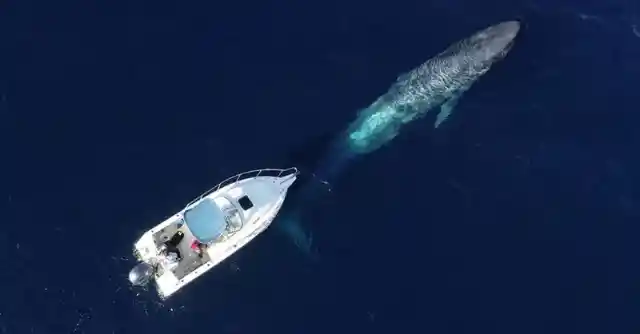
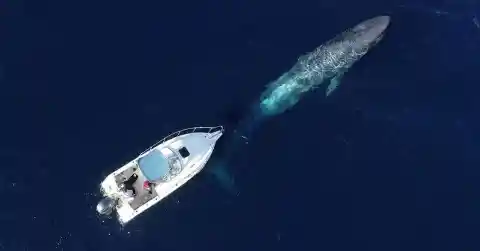
He loved whales and wanted to help. And he was the only one at the scene. The question was: what could he do about it without risking his life?
Whale Watching
Mick combined his passion for whales with a way to make a living and started offering whale watching tours to people interested in seeing the great mammals.
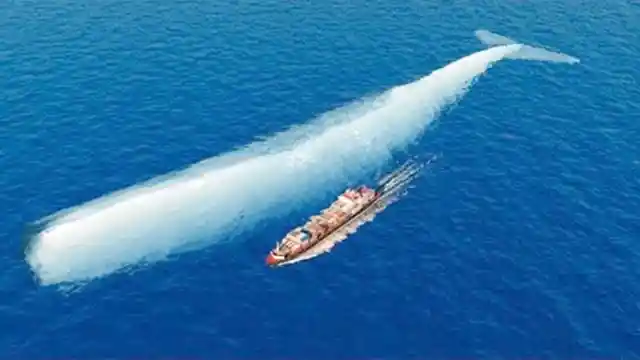
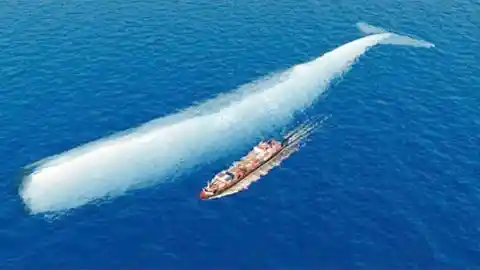
His tours were incredible. Seeing the giant creatures swimming around your boat was spectacular. But his usual tours were nothing compared with what he would encounter one day.
In Need Of Help
When he saw the whale, the ship captain became worried. Its state wasn't great, and he knew how difficult it was to help such a big animal.
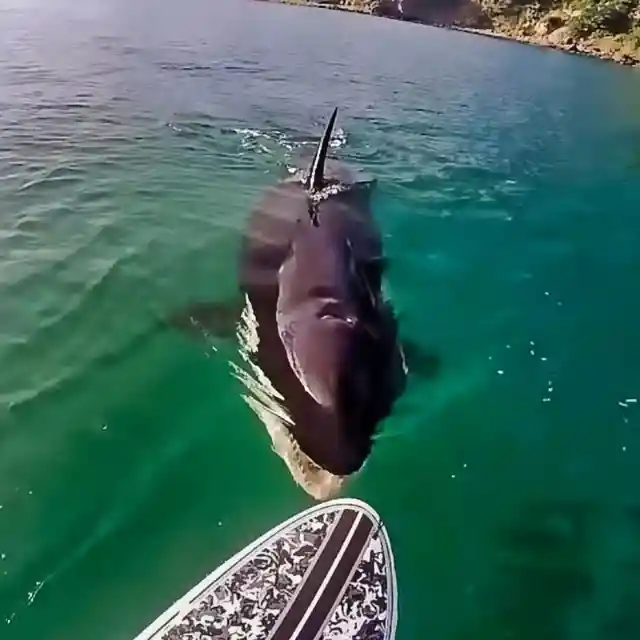
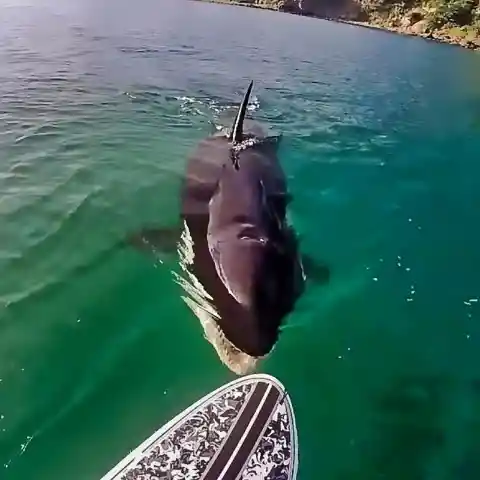
Mick knew that he was going to need some backup. He already had his boat, Superfish, at the ready and his own crew of divers to assist. But his rag-tag team couldn't do it alone.
Calling The Experts
So he reached out to the experts at the Marine Mammal Center. They were the closest facility that could do something for the poor whale.
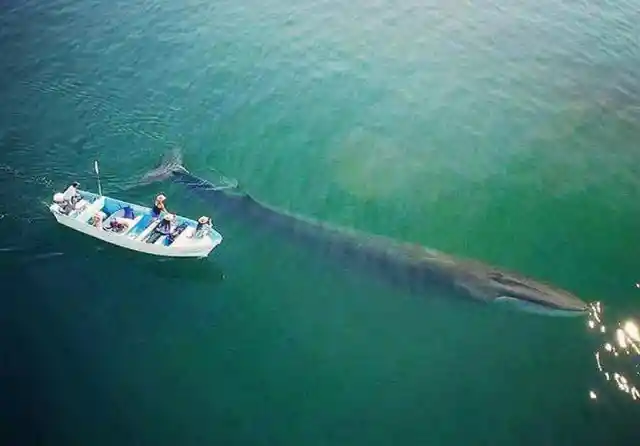
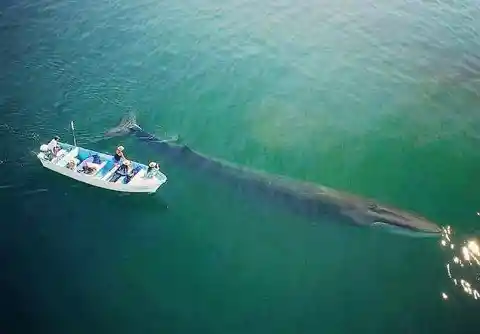
The Marine Mammal Center was a nonprofit organization based in Sausalito, California. Mick knew he called the right place because its staff had more than four decades rescuing marine mammals. But would they be able to save the whale?
Not Their First Time
The Marine Mammal Center's goal was to release hurt animals back into the ocean. While most of its patients were sea lions and seals, it saved over 20,000 marine mammals, including whales.
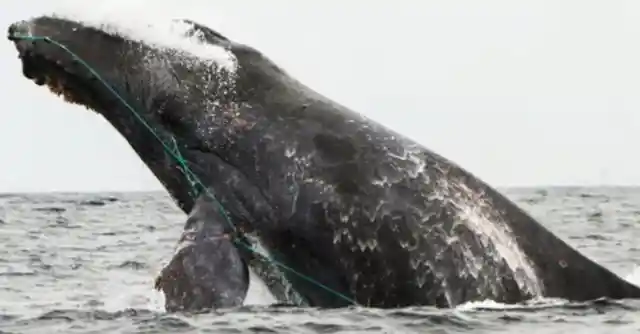
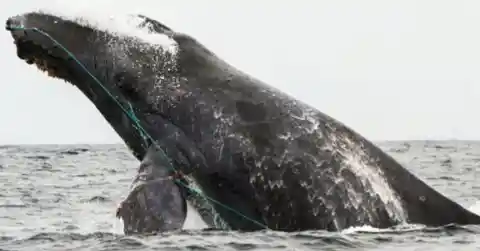
In other words, they were just the people that Mick needed that day. He hoped that they could come up with a plan to save the whale together before it was too late.
Volunteers
With a team of volunteers in place, everyone set off for the Farallon Islands, located near the coast of San Francisco, California. They made base there and were ready for action.
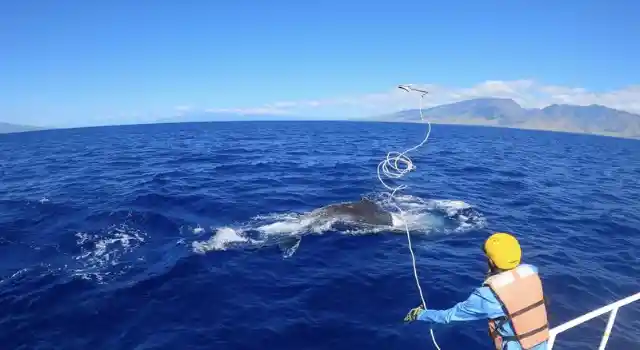
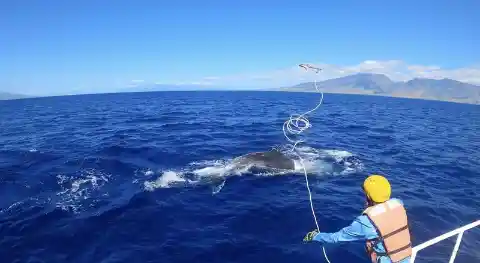
This place was where some crabbers had last spotted the troubled whale. Would they find it in time to save the poor animal?
The Search
Once there, the team saw that they were dealing with a 50-foot humpback whale floating near the surface. Evidently, the whale had been taking what should have been a normal migratory route from Baja California to the coastline of Northern California.
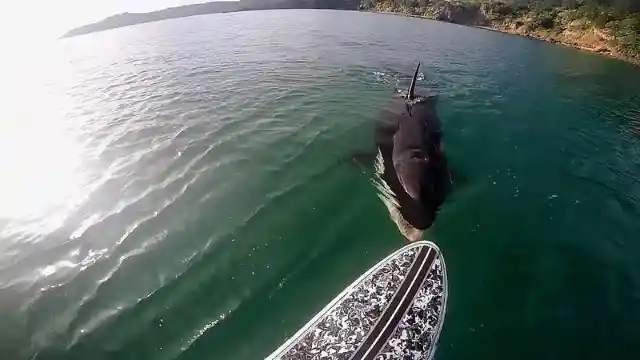
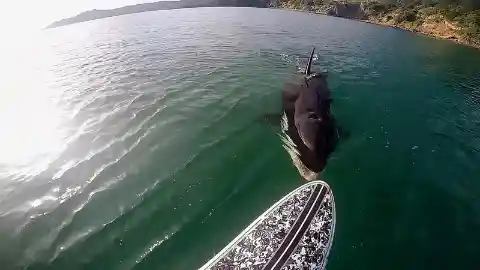
However, something wasn't quite right, and they had to do something about it. This wasn't supposed to happen.
Strange Behavior
Ordinarily, a marina mammal like this would only remain at the surface for a moment to catch a breath. What was going on?
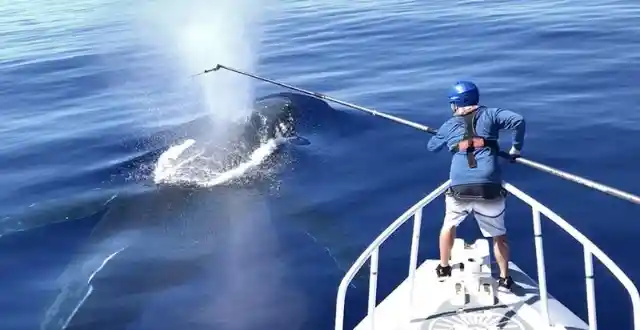
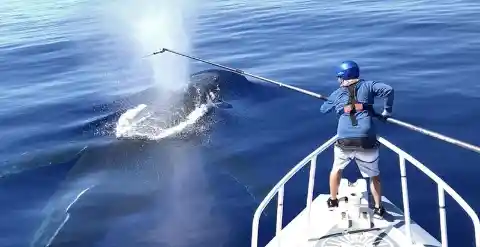
Lead diver James Mosquito and the rest of the rescuers knew that this whale was in trouble. But what could they do to save her? Could the animal become aggressive toward them?
Trapped
Apparently, the whale had become caught in something known as blue steel, an incredibly strong rope used by fishermen. In this case, crabbers had used it to attach traps to buoys at the bottom of the ocean.
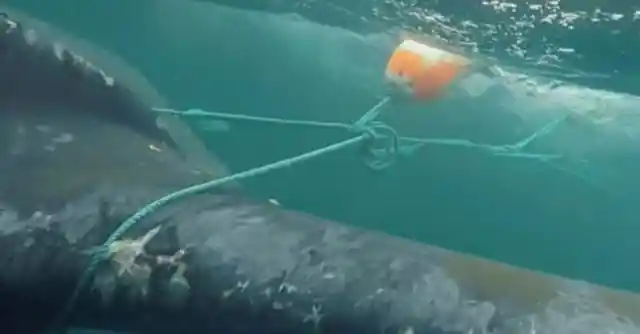
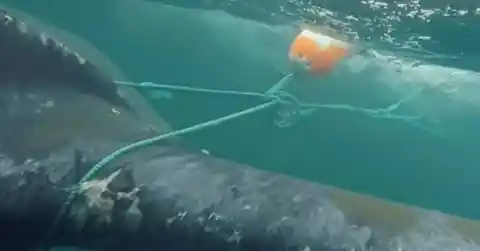
For the whale, however, it was quite harmful. The roughly 250-foot-long ropes were used for crab traps on the ocean floor, and they were taking a toll on the humpback whale. She became so tangled up in the blue steel that she'd lost almost all mobility. Something had to be done!
Desperate For Help
James felt a connection to the trapped mammal right away. In fact, he noticed that whenever the animal peaked above the water's surface, she appeared to be asking for help.
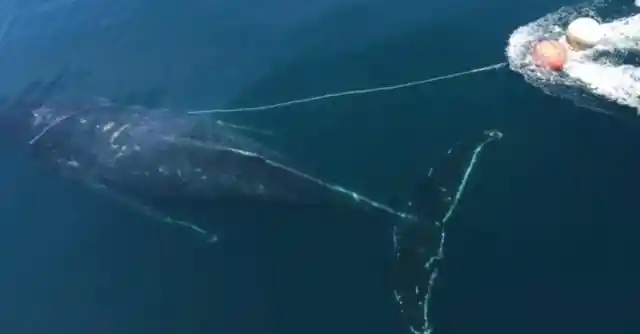
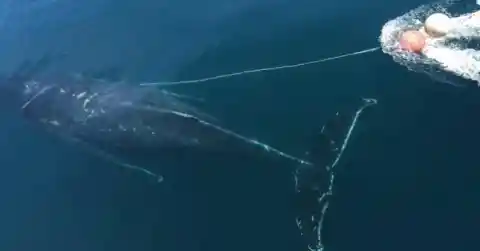
Somehow the poor humpback whale knew help was on the way. The mammal came up to breathe. It put its eye above the surface and looked at James and the crew as if asking for help.
A Matter Of Time
As the divers closed in, they were able to see just how much pain the whale must have been in. The more she struggled, the worse her predicament became. There was little time to help the whale survive the fight for her life.
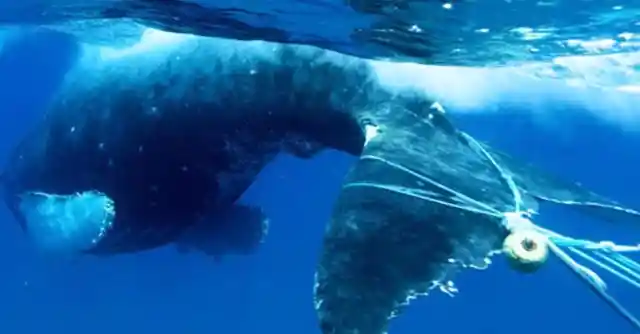
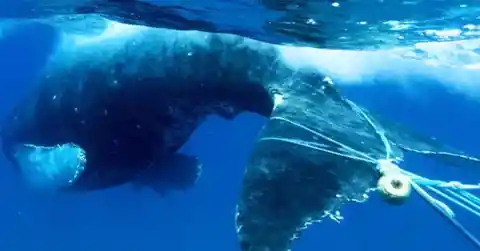
James and a few crew members dove as deep as possible to see what could be done beneath the surface. That was when they realized the situation was even worse than they thought. Jame's heart sank when he saw all the lines wrapped around the whale.
Doing The Impossible
James and his crew didn't think they were able to save it. Not only did the divers notice the rope twisting around her tail, but a line was running through the whale's mouth. Worse, she was constantly dragged down by the weight of a 3000-pound anchor pin.
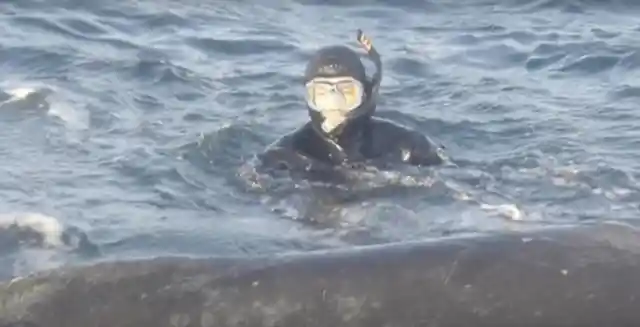
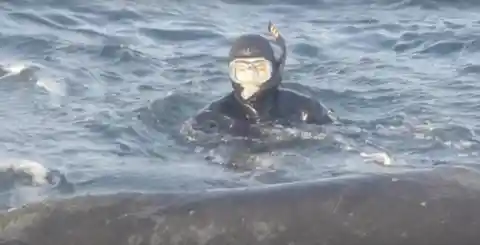
All she could do was try to keep her blowhole above the surface. Gentle as she was, the divers still had to be careful. Even a strong flick of the creature's tail could have done some serious damage.
A Dangerous Mission
As dangerous and as stressful as the task was, compassion led the way. What followed were five long hours of attempting to rescue the whale. All the while, she remained remarkably calm.
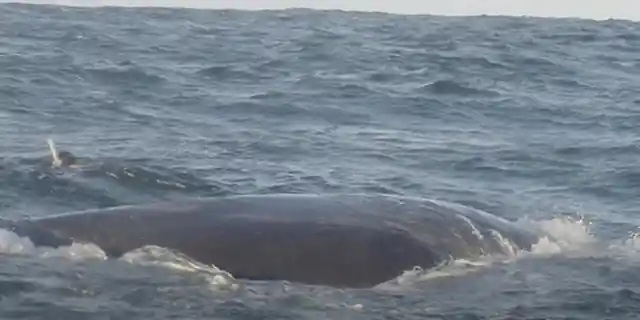
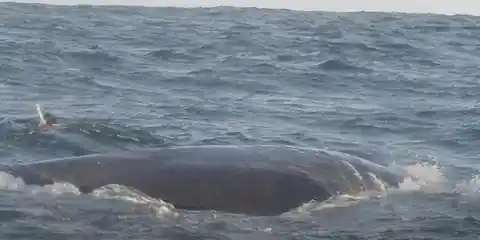
Finally, after so much delicate and hard work, she was free. The most remarkable was yet to come.
Unexpected Reaction
James suddenly had the whale coming right at him. It was like a slow-moving bus. It stopped six inches away from his chest and then nudged him forward like your dog does when he wants to be pet.
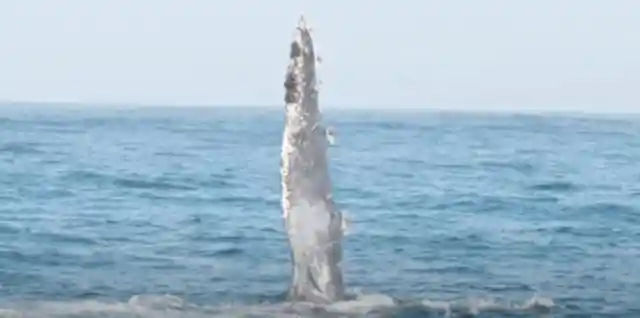
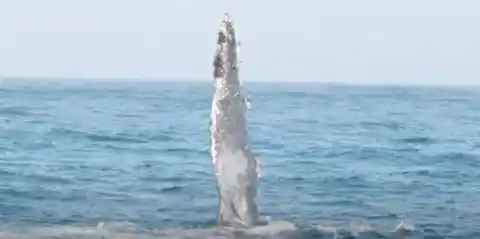
This was no coincidence. Clearly, the whale knew exactly what she was doing. It turned on its side, locked her left eye to her savior, and looked at him. James started petting her again, so it was definitely a display of affection. It was like she was saying thank you.
Successful Rescue
Mick, James, and the other rescuers had all the reasons to be proud of what they had pulled off. In fact, the Marine Mammal Center called it the first successful attempt on the west coast to free an entangled humpback. That whale knew that the divers were only there to help. It's like they were reading each other's minds.
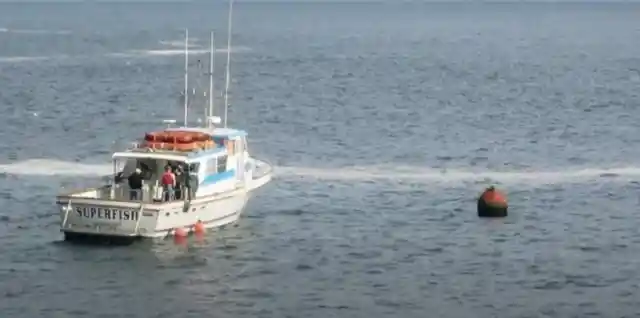
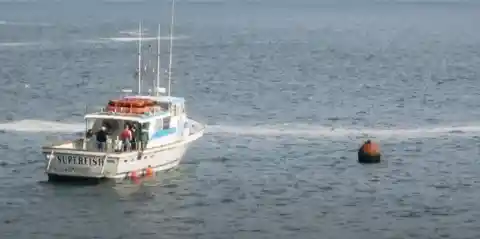
But this wasn’t the first time researchers had a startling encounter with these giants of the deep. But this time, a human was the one who needed rescuing.
Confusion
Pushed underwater by a 50,000-pound force, she was buffeted about like a cork on the sea. The whale’s nudges became more urgent as her colleagues watched in horror from the boat.
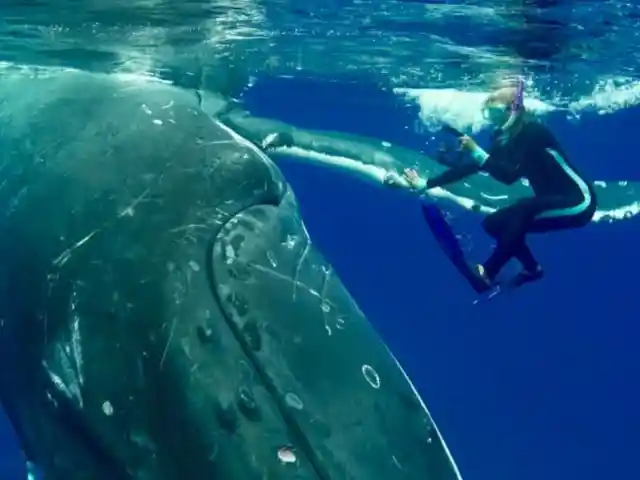
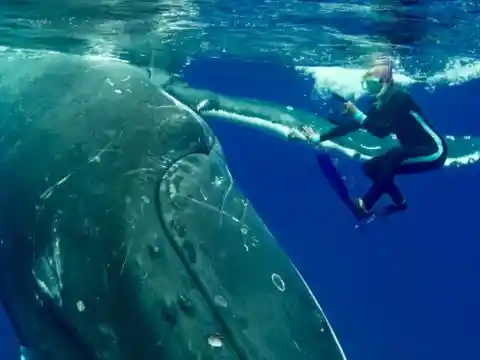
For those terrible 20 minutes, Nan was helpless and completely at the giant creature’s mercy as he tumbled her over and over. But the reason for the whale’s behavior was about to make Nan’s situation so much worse.
Nan Hauser
As a young girl, Nan Hauser had always dreamed of working in the water with dolphins and whales. But her terrible seasickness and fear of the ocean made her career in marine biology seem very unlikely.
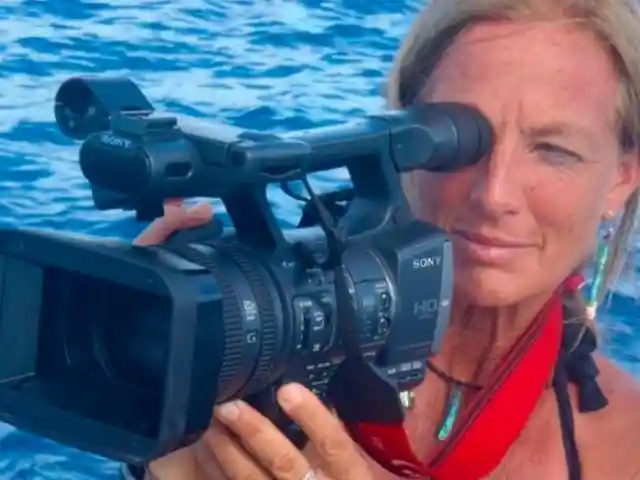
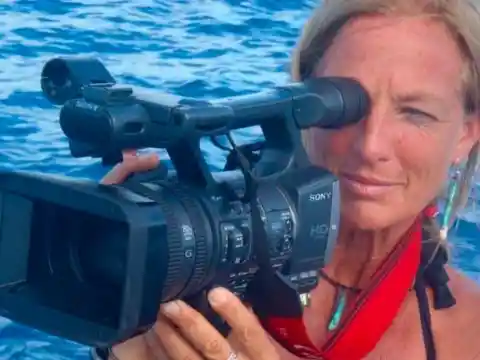
When she turned thirteen, she saw the video of a dolphin culling that changed everything. Instead of worrying about popularity like other girls her age, she made a dramatic decision that would change her life.
Leap Of Faith
Like so many people do, Nan put her dreams aside. Instead of pursuing marine biology, she chose a more practical career path -- she would go to college and become a nurse. But, although Nan found immense fulfillment in helping people, she just couldn’t shake the inexorable call of the sea.
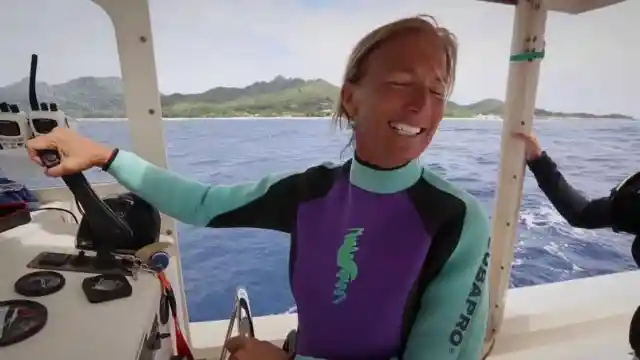
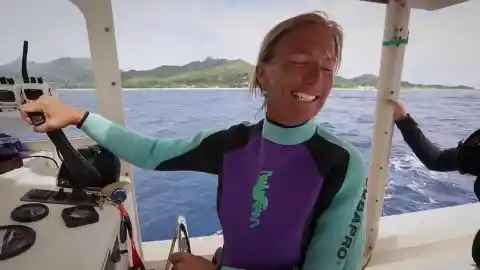
When Nan was in her thirties, she took a leap of faith. Now, she researches whales and dolphins in the Bahamas. She has been monitoring them for 28 years. But nothing could have prepared her for one unforgettable encounter.
The Fateful Dive
The dive started out just like any other. Nan anchored the boat and lowered herself into Cook Island’s sea. As she prepared to descend into the dark depths, a shadow in the distance started to approach; fast.
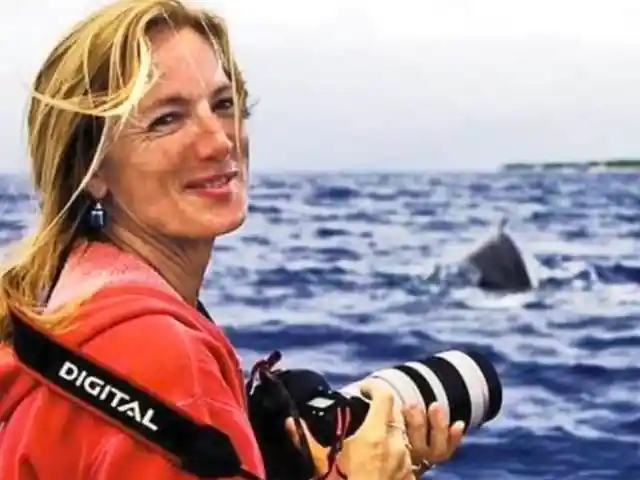
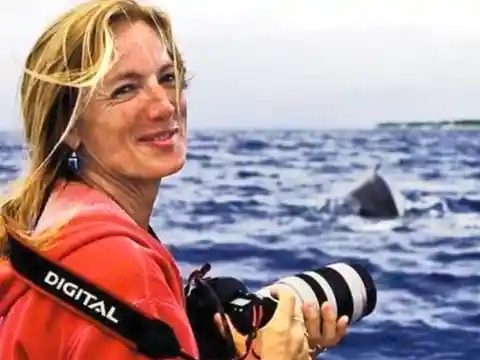
Her heart stopped as the shadow morphed into the silhouette of a whale. Little did she know, there was a possibility that she would be filming her own demise.
A Giant Humpback
Nan preferred the sea to dry land. She never felt at home on solid ground. She was her best self surrounded by marine wildlife, so she was no stranger to sea mammals.
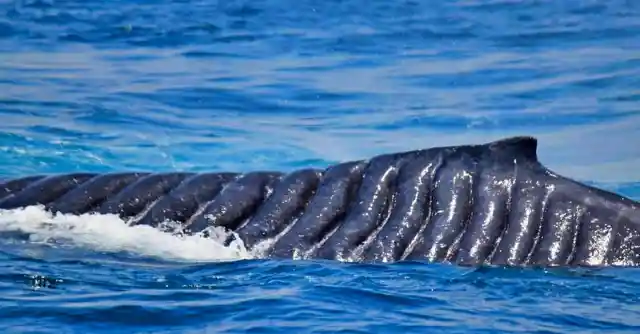
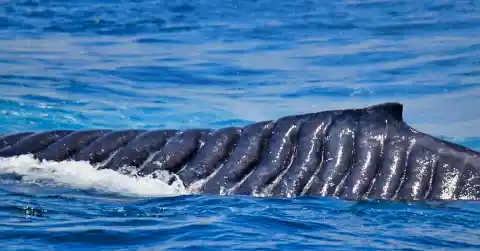
This particular humpback weighed about 50,000 pounds. Nan had spent her life dedicated to creatures of the deep, but in all her studies, she had never encountered the shy humpbacks in person before. As if this one’s presence didn’t shock her enough, what followed was unforgettable.
The No-Contact Rule
Nan is an avid believer in not interacting with any animal in the wild. She has openly written about whale harassment and only initiates contact with the whales she studies if they are sick or beached.
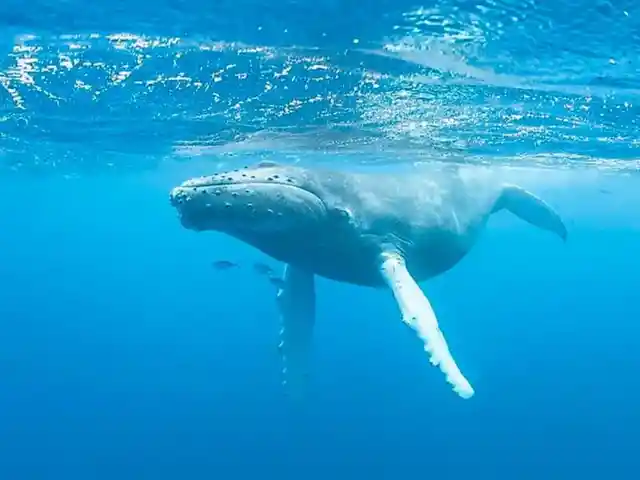
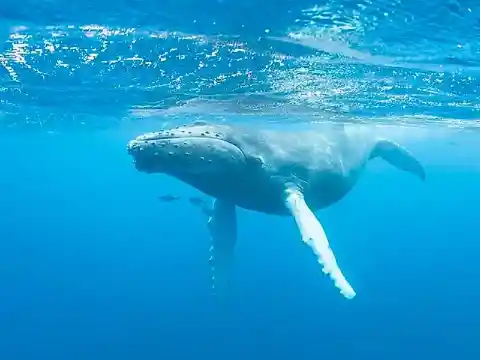
She has educated the world throughout the years but this hatchback whale seemed determined to throw all her studies out the window. The whale greeted Nan by nudging her up and onto his head. Only armed with her camera and diving equipment, Nan began to document their meeting. But her studies never prepared her for this.
Strange Behavior
The whale began to thrash around before her, rolling and gliding through the water. Then, he began to nudge her. Accompanied by a filmmaker, 63-year-old Nan found herself frozen by the beast's peculiar behavior.
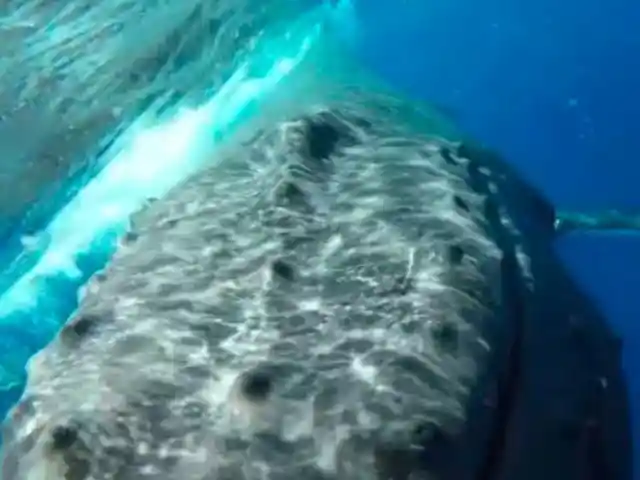
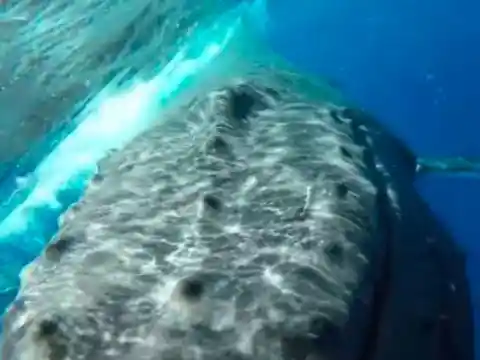
It pushed her along the surface of the water with its head before rising for a breath, along with Hauser. The whale continued to follow her and for the first time since she was a child, she was afraid.
Alarm Bells
Nan attempted to remain calm. Although she was buffeted around with a gaping mouth that could swallow her whole, she went into survival mode. She thought of one single thing that could keep her alive—eye contact.
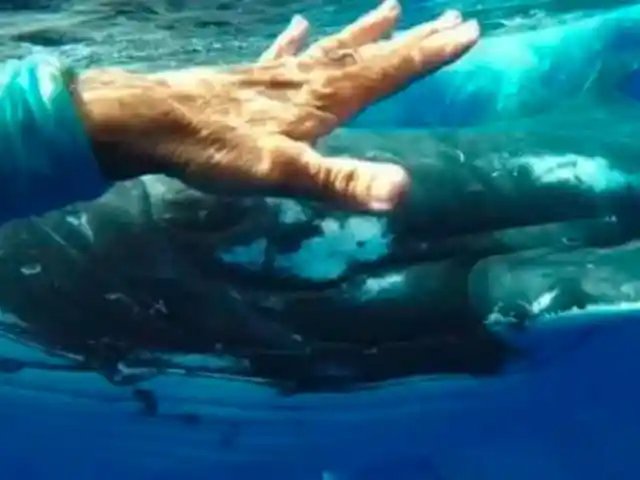
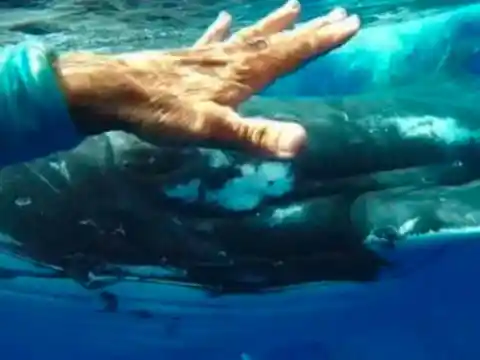
Highly sociable animals like whales and canines use eye contact to establish or challenge dominance. Up against a giant, this single response was all she could think of. But that didn’t stop this beast from pushing her further from her crew, and the boat.
Growing Frightened
On multiple occasions, Nan attempted to get back to her vessel. But on each attempt, she was interrupted by the humpback. The seed of fear began to sprout.
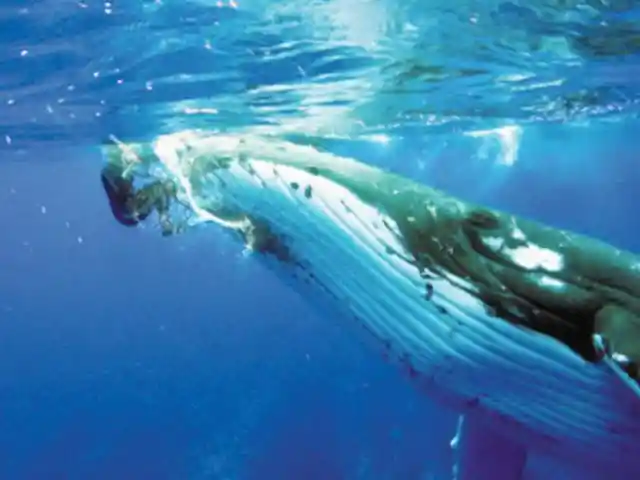
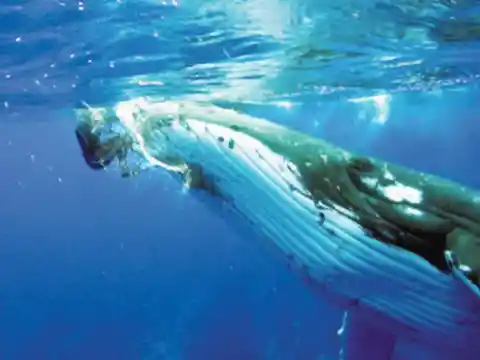
Her crewmembers, originally filming for a documentary, waited anxiously, fearing they would capture the end of a legend. Nan was as far from her comfort zone as she could be. But something else was keeping an eye on her.
A Dark Shape
Just as a second whale appeared out of nowhere, slapping its tail along the surface of the water, Nan spun around. One whale acting peculiar was rare enough. Similar behavior in a second was even more troubling.
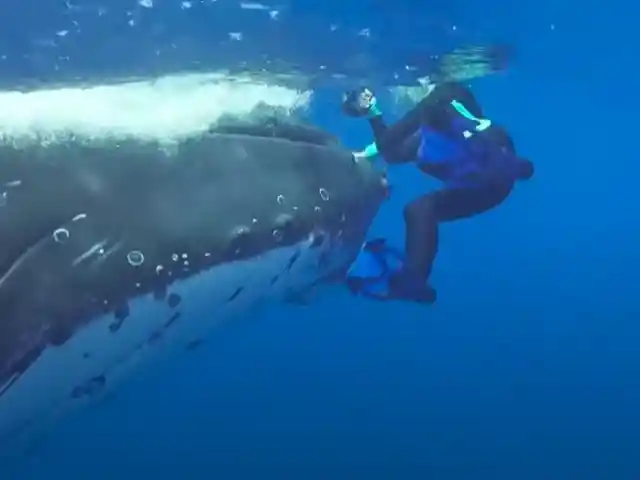
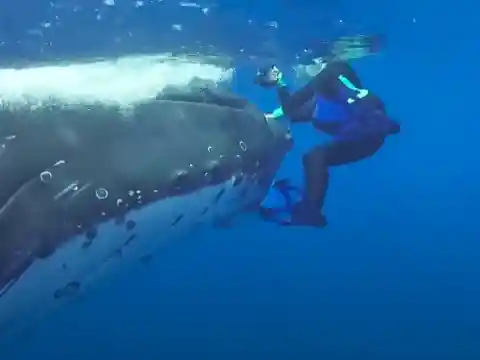
A third figure began to take shape in the distance. But this dark shadow didn’t bob up and down like the humpbacks. This menacing monster swayed from side to side—a horrifying characteristic of one particular sea creature.
Fearsome Predator
Nan couldn’t deny the truth. As a marine expert, she knew the shape of a shark when she saw one. But this wasn’t your average shark.
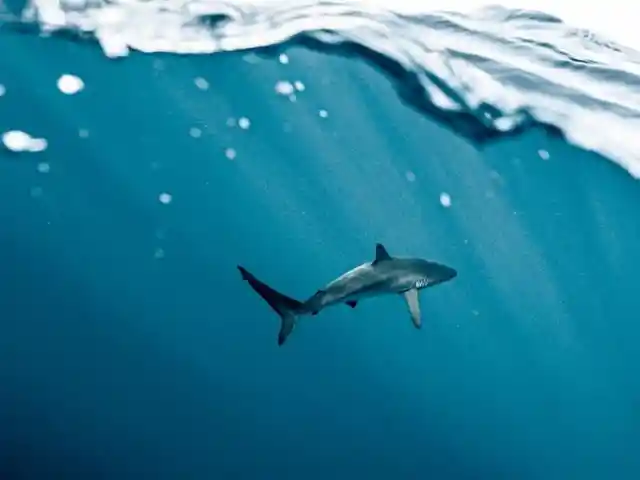
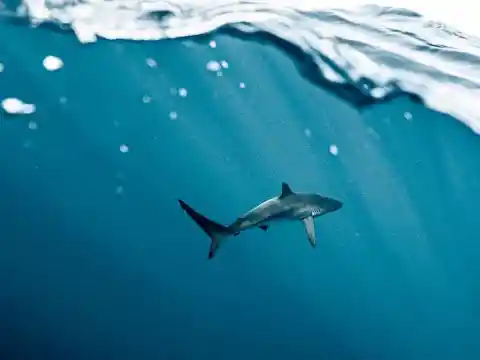
This was the second deadliest sea animal to attack humans and a common nightmare among surfers and divers alike. And the oceanic predator was coming straight for her at speed.
Tiger Shark
The tiger shark is one of the most feared animals for swimmers and aquatic life. Weighing up to a ton and spanning up to 25 feet long, this ruthless hunter is notorious for its determination.
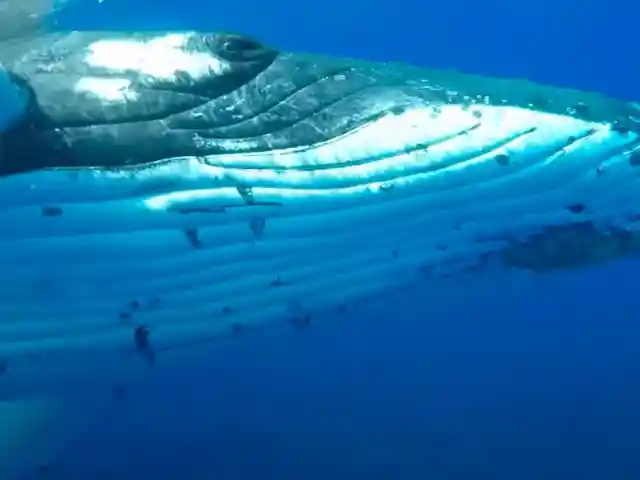
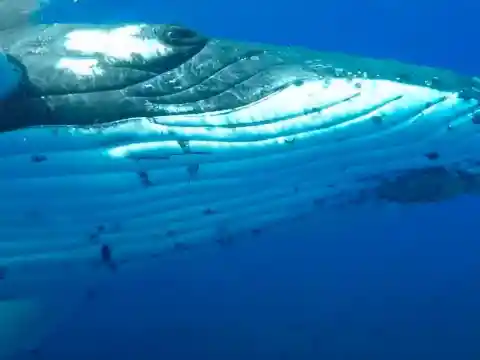
Unlike other sharks that take just a taster bite before abandoning their victim, the tiger shark will continue to attack the same prey until the bitter end. Nan swam with more force than she ever had before. But the whale continued to block her.
Escape
Nan finally broke free and she and her cameraman pushed every muscle of their bodies as they made their way back to the vessel, glancing over their shoulders constantly.
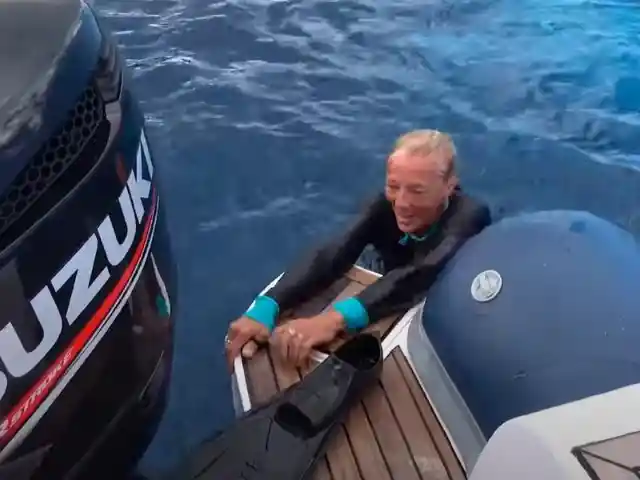
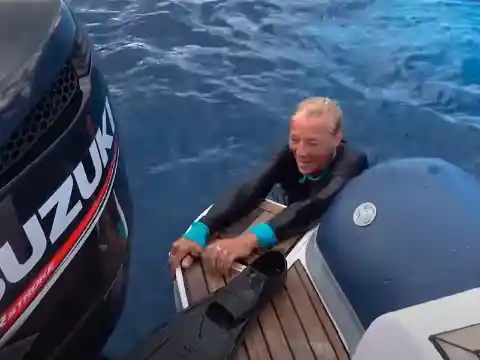
She took a deep breath as her hand hit the solid boat. Arms and legs flailed as the crew dragged them from likely peril. Nan lay on her back, staring at the blue sky. Was she dreaming? Because something just didn’t add up.
The Whale’s Motive
Like elephants, humpback whales tend to stick together and even protect one another’s young. But protecting humans seemed unfathomable, especially as they were poached to near extinction just 45 years ago.
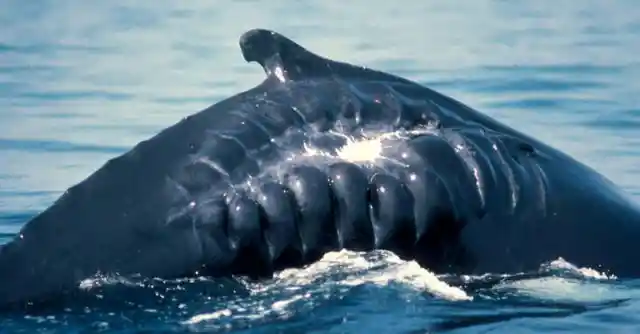
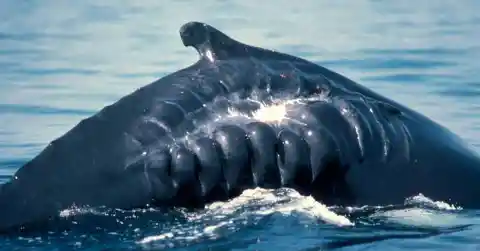
Thanks to people like Nan, who have dedicated their lives to protecting these animals, humpbacks may soon be removed from the federal endangered species list. But one question remains.
Awe
Nan has admitted her own awe and wonder regarding the encounter, “I’m a scientist, and if anyone told me this story, I wouldn’t believe it.” Her encounter has gone viral, leaving scientists around the world speechless.
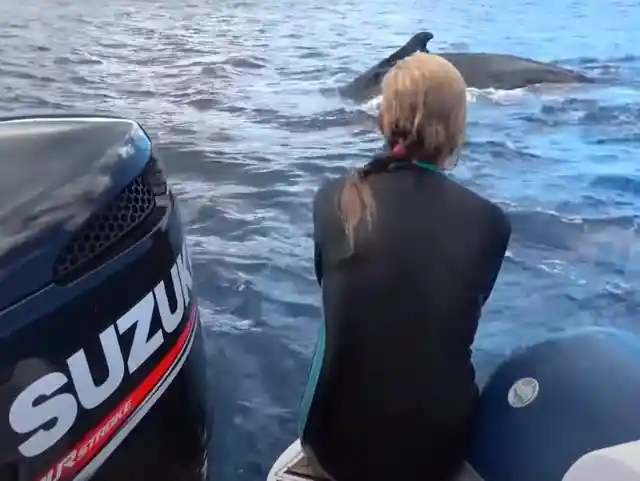
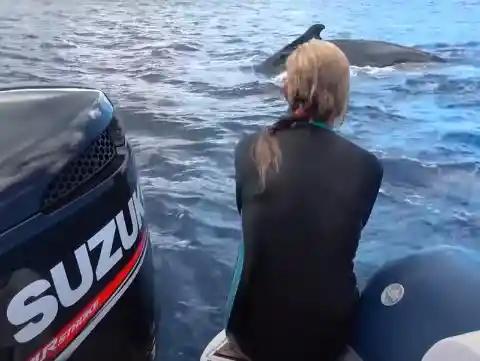
She hopes the video will continue to spread awareness regarding the complexity of these mysterious creatures. The humpback whale had been trying to warn her about the shark.